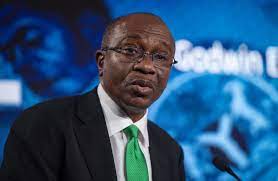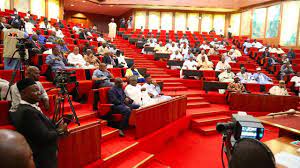
Nigeria’s demand deposits added N1.67 trillion between October (when the naira redesign was unveiled) and January to hit an all-time high of N20.18 trillion.
Demand deposits, savings that could be withdrawn without advance notice, were N18.5 trillion at the end of October. The funds grew by about nine percent in three months.
The figure dropped to N18.12 trillion in December, perhaps as a result of Christmas appending.
By January, demand deposits rose by 9.2 per percent-on-month (m/m) to over N20 trillion, the highest ever held by Nigerian banks, according to financial data sourced from the Central Bank of Nigeria (CBN).
Towards the end of last month, Nigerians turned in their physical savings in old currencies at banks as the initial deadline for demonetisation of the old N500 and N1000 drew near. Much of such deposits have been trapped as bank customers have lost access to their money.
Year-on-year (y/y), the savings rose by N4.37 trillion or 27.6 per cent. The total demand money in demand deposit accounts (DDAs) in the custody of all banks in Nigeria as of January 2022 was 15.8 trillion.
Data also shows a sharp decline in the currency outside banks. Last month, the volume of money outside banks was N788.9 billion, which is 30 per cent of N2.71the trillion on records three months earlier. The country’s currency outside banks had remained consistently above N1 trillion since 2011.
The CBN has given the huge currency outside banks and its associated economic risks as one of the reasons behind the naira redesign programme. The governor, Godwin Emefiele, said the huge volume of money held outside banks has incapacitated the ability of the financial system to create credits.
But according to data, the growth of credit to the private sector has remained sluggish, growing at an average of one percent past three months. That is far less than y/y the growth speed, which is about 20 per cent.
This medium reported an unusual uptick in the short-term credit flow from deposit money banks (DMBs) to the CBN since the beginning of the year.
The trend, which is a reversal of the historical chart, suggests that many banks are awash with idle funds, much of which may have come from the recent increase in deposits since the beginning of the naira redesign policy
Commercial banks had unpacked a total of N755.05 billion through the standard lending facility (SLF) from the beginning of the year up till February 10.
The figure was N226.7 billion or 43 per cent higher than the cumulative figures the apex bank lent to the banks in the same period.
From the beginning of the year, banks had borrowed N528.3 billion from the lending component of the window (standard lending facility).
Of the total standard discount facility valued at N1.28 trillion completed this year, SDF accounts for 58.8 per cent, a reversal of previous years’ statistics.
Last year, N14.4 trillion was recorded as transaction value, with a standard lending facility (SLF) taking 77.5 per cent or N11.15 trillion, freeing only 3.24 trillion for SDF.
The recent uptrend of SDF started in early January but peaked on Friday when the total lending topped 112 billion or 14.8 per cent of the total SDF transacted in the 40 days.
On average this year, banks lend a total of 32.83 billion to the CBN daily while they receive, cumulatively, about N23 billion, a further analysis of the data set reveals.
The uptick in demand deposits, stagnating private sector credit, and rising SDF point to decreasing economic activities – a reason to worry about a higher unemployment rate in the near term.





